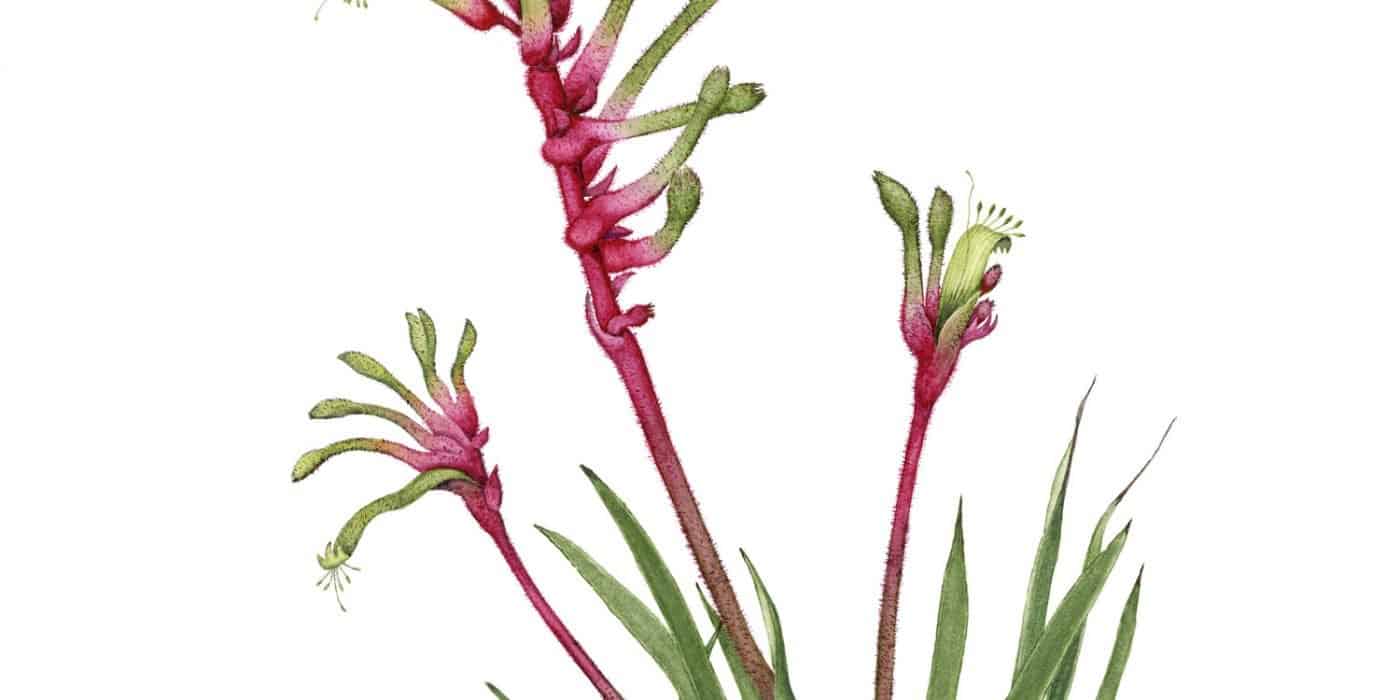The Floral Emblem of Western Australia - The Red and Green Kangaroo Paw
When Spring bounces into our gardens and native bushlands, we are treated to the colourful blooms and the vibrant greens of plants we have nurtured or waited for during Winter. One spectacular and naturally occurring example comes to mind – the wild flower season of south west of Western Australia.
Each State and Territory of Australia has its own floral emblem, celebrating the wonderful diversity of Australia’s native plants. The floral emblem for Western Australia is the Red and Green Kangaroo Paw, Anigozanthos manglesii. This plant is native to the south west of the State and has been the floral emblem of Western Australia since 1960. The Kangaroo Paw of which there are 12 species, belongs to the genus Anigozanthos meaning irregular flower and was originally named by the French botanist, Jacques-Julian Houten de Labillardiere, who visited the region whilst on an expedition in 1792.
The floral emblem was named after Robert Mangles who grew the plant from seed in England during the 1830’s. His brother, Capt. James Mangles who was in the Navy visited Western Australia in 1831. Both men were 19th Century horticultural enthusiasts and were keenly interested in the native plants of Western Australia.
Red and Green Kangaroo Paw plants consist of grey-green strap-like leaves that grow to about 30cm in height. The hairy, bottle-green, unscented flowers occur on reddish stems up to 80cm in height. Kangaroo Paw plants are wonderful bird attractors to the garden because they together with some marsupials and insects are the pollinators of this plant. Pollen rubs onto the head of the bird such as a honeyeater or a wattlebird when it feeds on the nectar and as it hops from flower to flower it shares the pollen with next flower. Amazingly, the differing individual shape of each flower species means plants are not crosspollinated because different parts of a bird’s head will brush different spots of each species of Kangaroo Paw. Both native and hybrid species are great sun lovers blooming in full sun and require well drained sandy soil to flourish. They can be cut back severely after flowering. They grow from a rhizome in both tall and short sizes suiting a variety of garden styles.
A couple of years ago, I was visiting a friend in Perth and spent time in the south west region of Western Australia. The bushland is different to the east coast and for 45,000 years the region has been the home of the Noongar people, the traditional owners. It is an excellent region to visit in Spring as it includes spectacular coastal vistas and from early Spring until November, the beautiful wildflowers are at their best including the Kangaroo Paw. This region is also host to the Margaret River wine growing region. During the 1840’s both English and indigenous words were used when places were being named. The then Governor, Hutt said some places should keep their Noongar names. In the dialect of the Noongar people the word ‘up’ means ‘place of’ and as a result there are quite a few place names ending in the suffix “up”. Some that come to mind are, Yallingup – place of caves, Nannup – stopping place and Boyanup – place of quartz.
An interesting spot to visit in Spring 2021 perhaps!
Image credit: Malcolm Hobday



